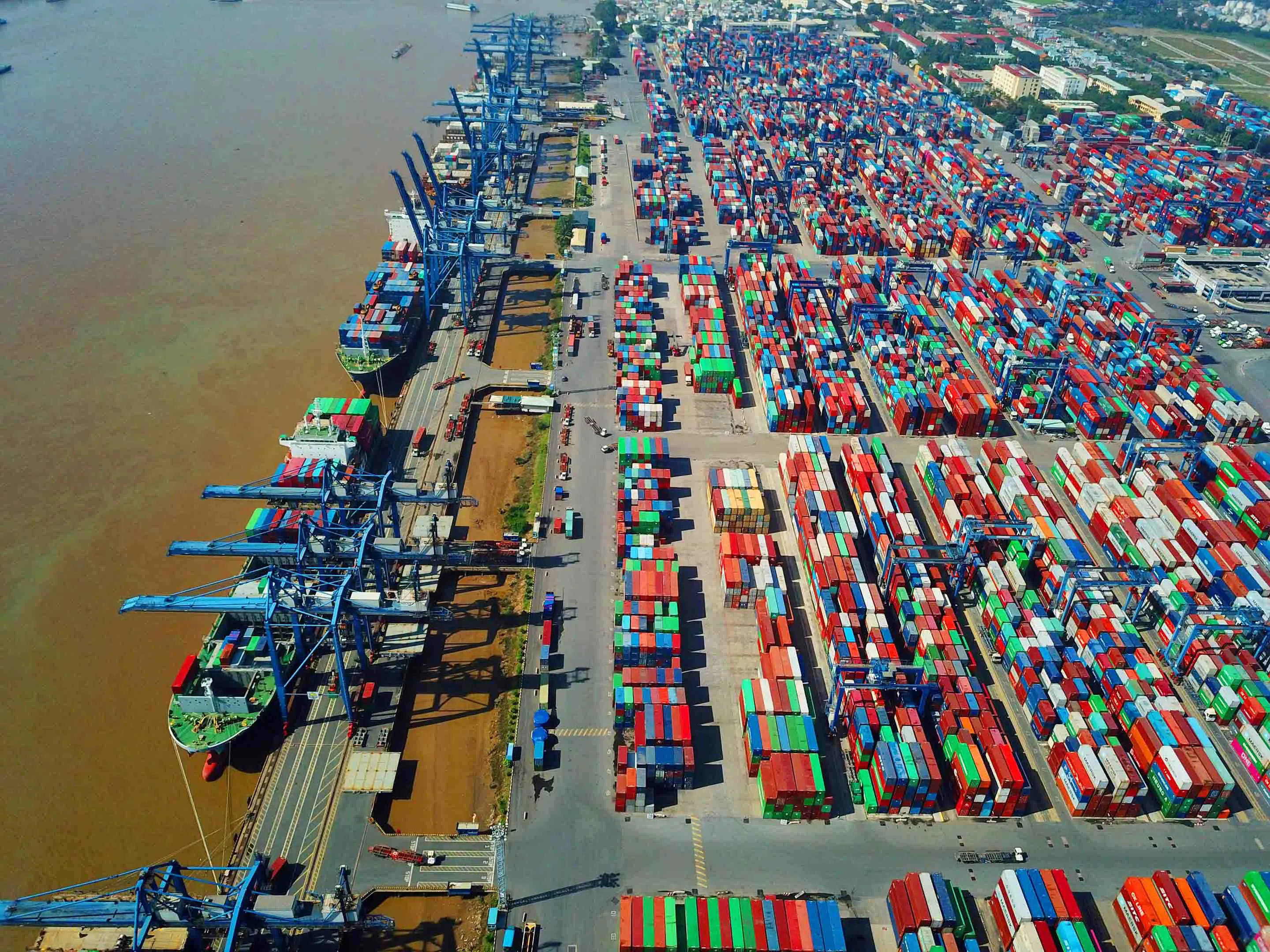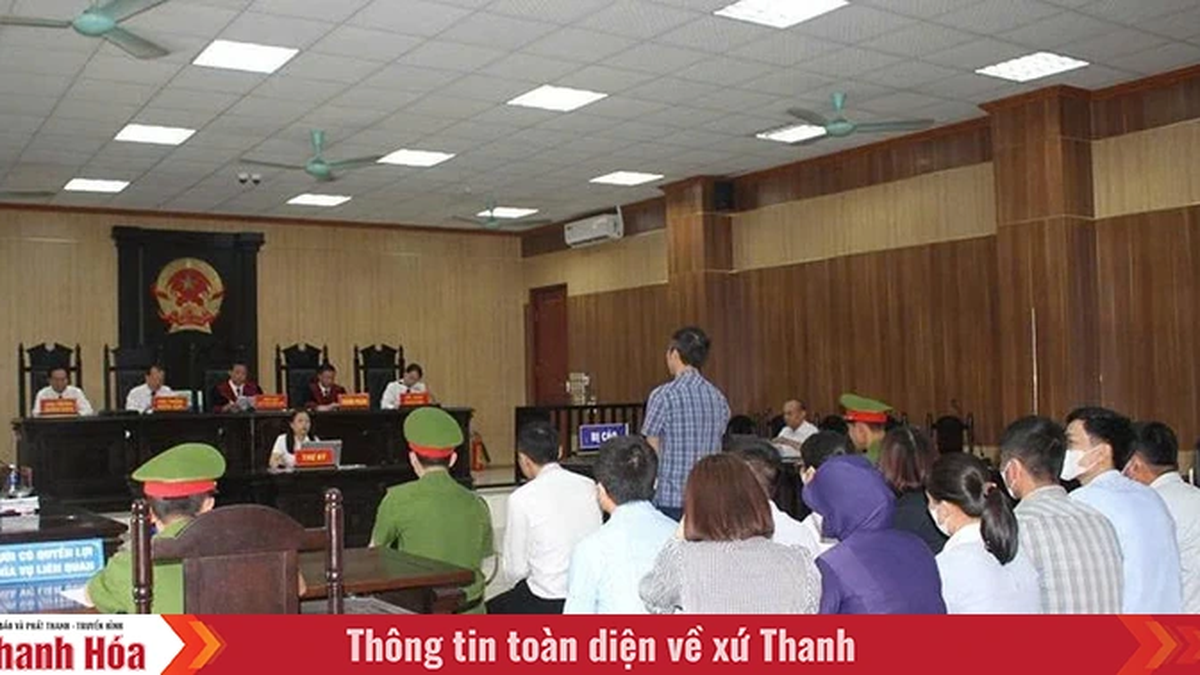Deputy Prime Minister Tran Hong Ha has just approved the adjustment of the Master Plan for the development of Vietnam's seaport system for the 2021-2030 period, with a vision to 2050. One of the important adjustments is that Ho Chi Minh City seaport is planned to potentially become a special seaport.

Ho Chi Minh City seaport is one of the three largest seaports in Vietnam, along with Hai Phong and Ba Ria - Vung Tau seaports (Photo: LT).
Ho Chi Minh City seaport belongs to seaport group number 4. According to the plan, by 2030, goods passing through seaport group number 4 will reach from 500 - 564 million tons; passenger throughput will reach from 2.8 - 3.1 million passengers.
Vision to 2050, meeting the demand for goods with an average growth rate of about 3.5 - 3.8%/year and passengers with an average growth rate of about 0.9 - 1.0%/year.
At the same time, complete the investment in Cai Mep Ha port, continue to invest in Can Gio international transit port area, Ho Chi Minh City to form a large-scale international transit port cluster of Asian and international stature at Cai Mep estuary (including Cai Mep and Can Gio port areas). At the same time, complete the relocation of ports on the Saigon River and continue to study the relocation of other ports suitable for the development of Ho Chi Minh City urban space.
According to the latest announcement by consulting firm Alphaliner, Ho Chi Minh City seaport is in the top 30 largest container ports in the world in 2023, in terms of throughput. Accordingly, the port holds the 20th position in the rankings, with an output of nearly 8.4 million TEUs.
In Southeast Asia, Ho Chi Minh City seaport ranks 5th, after Singapore, Port Kelang and Tanjung Pelepas (both in Malaysia) and Laem Chabang (Thailand).
Previously, according to Lloyd's List, Ho Chi Minh City seaport maintained its position in the context of slow economic growth in the country after the Covid-19 pandemic.
Vietnam can develop in the strategic supply chain with this seaport. The future of Ho Chi Minh City seaport can be further expanded and this area is also undergoing important changes.
Specifically, the Can Gio International Transit Port project near Ho Chi Minh City seaport with an estimated investment value of 6 billion USD, if approved, could be the largest transit port in the country and have a significant impact on trade with countries in the region.
Associated with the Southern Key Economic Zone, Ho Chi Minh City seaport is in the group of seaports No. 4 - the most developed seaport group in the country. Together with Cai Mep - Thi Vai area, the container port cluster in Ho Chi Minh City area has become one of the important port areas in the global goods supply chain.
This is also one of the first seaports in the country to welcome many large ships. According to the Ho Chi Minh City Maritime Port Authority, to date, the regional seaport has received about 8,044 ships with a tonnage larger than its design entering and leaving the seaport.
Thanks to that, the volume of goods through the seaport has also continuously grown, meeting and actively supporting the import and export of goods in Ho Chi Minh City as well as the Southeast region.
According to statistics from the Vietnam Maritime Administration, in 2023, the volume of goods passing through Ho Chi Minh City seaport will reach more than 167.2 million tons with a total number of ships passing through reaching more than 21,000. The volume of passengers passing through the port will reach about 34,000.
The Ho Chi Minh City seaport area is also assessed by experts as having many ports invested in with synchronous and modern scale, high-productivity loading and unloading equipment with fast ship clearance time.
In particular, Tan Cang Cat Lai port is the port area with the largest container throughput volume in the country, receiving ships with a capacity of 20,000 - 30,000 tons or larger (reduced load), mainly transporting Asian routes.
Source: https://www.baogiaothong.vn/co-hoi-lon-cho-cang-bien-tphcm-192240530190924074.htm



















































![[Maritime News] More than 80% of global container shipping capacity is in the hands of MSC and major shipping alliances](https://vphoto.vietnam.vn/thumb/402x226/vietnam/resource/IMAGE/2025/7/16/6b4d586c984b4cbf8c5680352b9eaeb0)













































Comment (0)